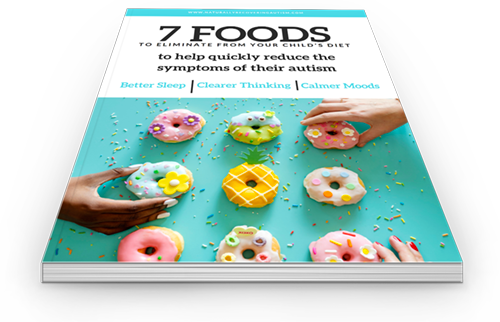Let’s talk about school. Children on the autism spectrum can have a hard time sitting still, staying calm, and focusing. As with anything else, there are different needs for each child.
How To Improve Attention
Learning should have emotion involved. We are often driven to learning by a need of some kind. For parents there is no greater need than to help their child. Studying takes time and energy. For children with autism there is often a shorter attention span so we have to make the most of every minute. So how do we go about learning and retaining? Retaining is the key.
Action is also required. Make a list that is doable. I suggest journaling each day. Write down the day before what you plan to do the next day, then set aside the time to do it. Before beginning, tell your child exactly what the plan is and that there will be a set time for it that you will set a timer for them to see. This will help them understand the amount of time with an actual visual way to know what that is.
Time timers can help for home or school or anytime. They are visual timers to help show your child the time. This lets them know how much time is left until the class is over or until a predesignated activity. There’s a huge difference between looking at a clock and being able to say that it’s 3 o’clock and understanding “how long” 5 minutes is. For those who learn differently, this type of abstract thinking is even more difficult and often creates a high level of anxiety.

The Pomodoro Technique
The brain gets bored if a task is done too long. When this happens it stops retaining. The pomodoro technique is known to increase focus, retention, consistency and quality of time spent. Quality is essential to help retain and utilize the information.
The Pomodoro Technique is a time management method developed by Francesco Cirillo in the late 1980s. The technique uses a timer to break down work into intervals of about 25 minutes, separated by short 5 minute breaks. Each interval is known as a pomodoro, from the Italian word for ‘tomato’, after the tomato-shaped kitchen timer that Cirillo used.
A Pomodoro is 25 minutes because it’s the perfect length of time to help you not procrastinate, be productive, create urgency and help you stay focused on any task you are tackling. A child with special needs may not be able to withstand 25 minutes of solid focus, so choose a time period that you know works well for your child. Set a timer for the 25/5 intervals (used as the example).
How Pomodoro Works?
- Decide on the task, and a time period to do it in, and explain it to your child.
- Start your timer on your phone or on a Time Timer or wherever.
- Make this the time for focusing on work for the next 25, or so, minutes.
- Stop once the alarm goes off.
- Take a 5 minute break.
- Resume working for another 25 (or so) minutes and then take a break for another 5 minutes.
- After 3 or 4 cycles, take a 20-minute break.
During the 5 minute break you can do things like take a short walk, do breathing exercises to fill the brain with oxygen, eat a protein sourced food (protein helps us think but carbs make it harder to think), do yoga, or sit outside in the sun. Whatever inspires you and gives you the feeling of actually having a break.
Schoolroom Strategies
If sitting still is a challenge, arrange it with the teacher for the child to go outside f or a few minutes, as needed, and do pull-ups on the pull-up bars. This calms the nervous system and uses up excess energy. In case there are no pull-up bars nearby, perhaps the teacher could have a box ready with some books inside. This gives the box some needed weight. The child could be asked to carry the box from his classroom to another one nearby. Never let the child miss a recess opportunity!
or a few minutes, as needed, and do pull-ups on the pull-up bars. This calms the nervous system and uses up excess energy. In case there are no pull-up bars nearby, perhaps the teacher could have a box ready with some books inside. This gives the box some needed weight. The child could be asked to carry the box from his classroom to another one nearby. Never let the child miss a recess opportunity!
Sitting at the front of the classroom allows for less external stimuli between the child and the teacher. Remember that when a child on the autism spectrum is asked a question, he will need an extra moment to process the information before answering. Give this moment to him.
Working along with the staff at your child’s school can be very helpful. Teachers and therapists often want to help but don’t know how and they don’t know what your child needs. For education on how to do this please listen to my podcast interview, The Parents Complete Guide to School Advocacy.
For rainy days or homeschooling, door jam bars are a fabulous help. For more information see www.playawaytoy.com. For a list of ideas please listen to my podcast, At-Home Fun To Help Calm Sensory Needs [Podcast Episode 78]
Listen to my podcast interview with sensory processing expert, Lindsey Biel.
For an online, at-home, sensory calming course please listen to my podcast with Sonia Story on Brain, Body and Sensory Motor Integration Tools.
Diet Matters In Learning and Attention
Diet is an essential component. If your child eats carbohydrates for breakfast, he will not be able to focus well. If he eats protein for breakfast, such as an egg or nuts, his brain can utilize the protein and he will be able to focus better. It should  go without saying, but do not give him sugar, sweets, or anything with artificial ingredients, especially food dyes! This will undermine all of your other efforts.
go without saying, but do not give him sugar, sweets, or anything with artificial ingredients, especially food dyes! This will undermine all of your other efforts.
It is important to note that if your child’s body is cleared of many of the underlying chemical, physiological and anatomical issues, often their needs for therapy decrease. Once their system is clean, you will have who they truly are. Then you will know what is left that still needs to be worked with.
Development goes from large to small motor skills. The individual must be taught in accordance with his needs. Biology should be addressed first so that your child is more capable of understanding and carrying out the tasks asked of him.
Once your child is on a secure biological footing, he becomes a teacher’s and a therapist’s dream, occupational or otherwise. At that point, the professionals can come in and get to the core work with the child without having to battle against all of the other factors that prevent him from fully engaging and learning what they have to offer.
Get Your Free Food Guide!
Quickly Reduce Your Child’s Symptoms of Autism by Eliminating 7 Foods Most People Consume Daily!
The first crucial step of autism recovery is to begin restoring health to the gut and the immune system.
The health of the gut is directly linked to the health of the brain and therefore to the symptoms of autism. In fact, 80% of the immune system comes from the gut so if the gut is not healthy, then the brain can’t thrive, and the immune system is compromised. It’s a vicious cycle, but thankfully, it’s one that we can put an end to by first eliminating harmful foods.
- Harmful Foods: Identify the foods that worsen autism symptoms and understand the science behind their impact.
- Smart Food Choices: Learn about easy dietary swaps that can significantly enhance sleep, clarity of thought, and emotional well-being.
- Practical Implementation: Get valuable tips on how to implement these dietary changes easily and effectively.
This is for informational purposes only and is not meant to diagnose or treat. Every child’s level of recovery is different. No two people are the same. It is never implied that all children will have the same outcome. Results are all based on individual biology and the work that is done. This process takes time and various steps, effort and resources need to be weighed. Our programs are intended to help you become more knowledgeable and guide you to help bring your child a better quality of life, whatever that may be. We want to help by giving great content, direction and strategies that move you forward. Nothing on this page or any of our websites is a promise or guarantee of results or future outcomes. The results on this page and any of our websites are not typical or promised. In fact, there will be people who purchase this and other programs and never put the work into implementing the strategies taught and therefore will achieve little to no results. Our more detailed earnings disclaimer, privacy policy, and terms and conditions for this program and website can be accessed via the links below. We hold ourselves (and you) to a high standard of integrity. We are cheering you on every step of the way.












